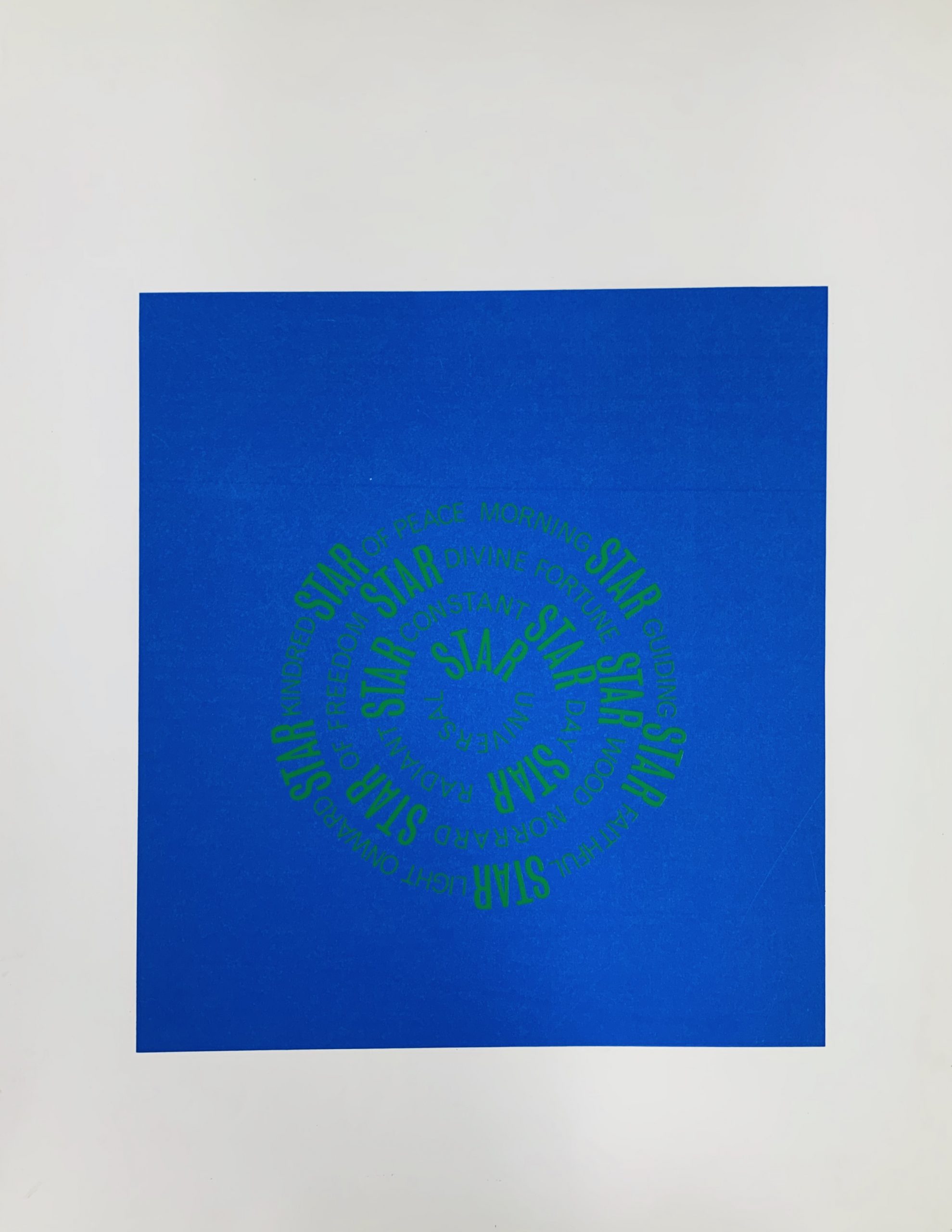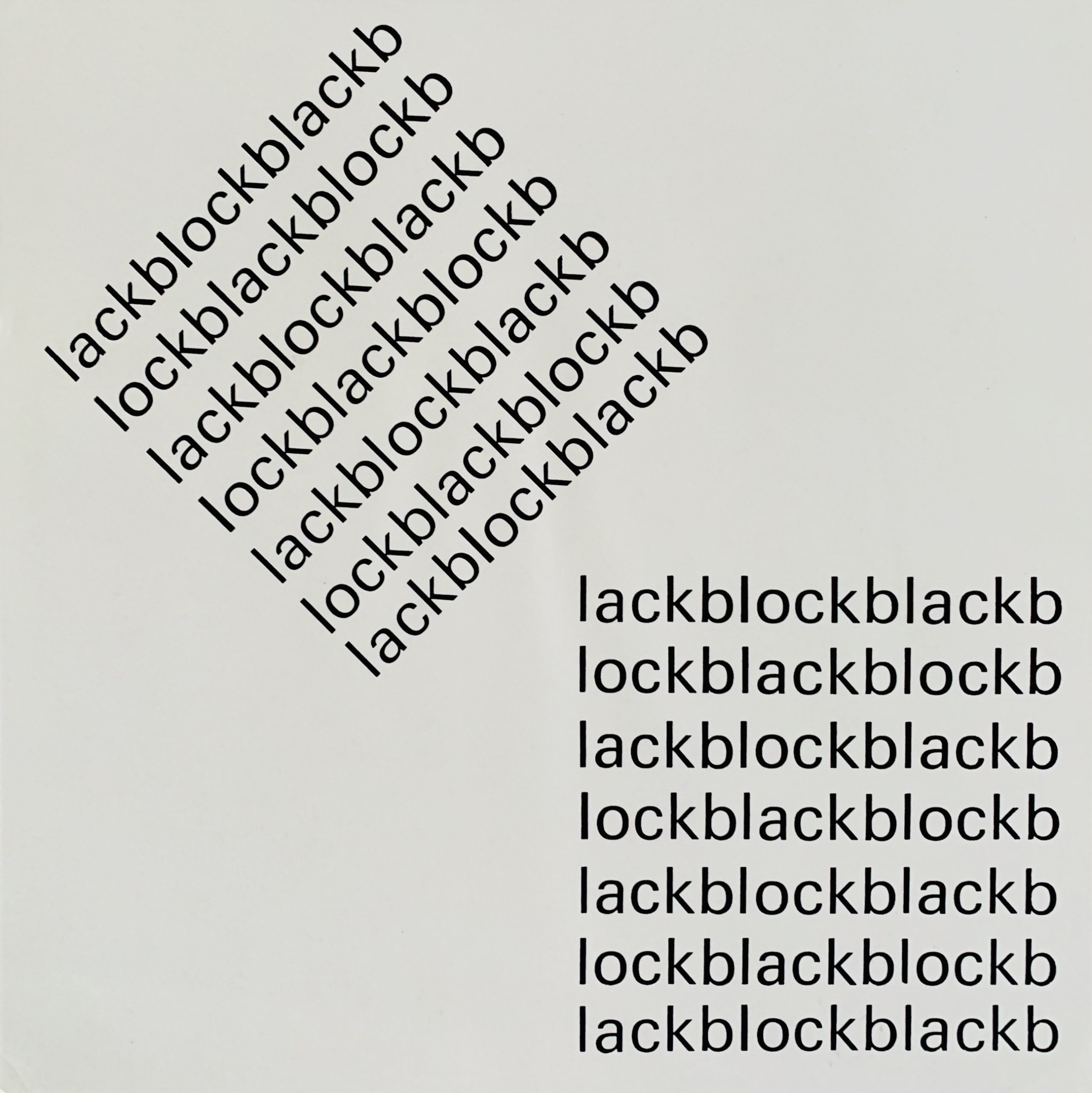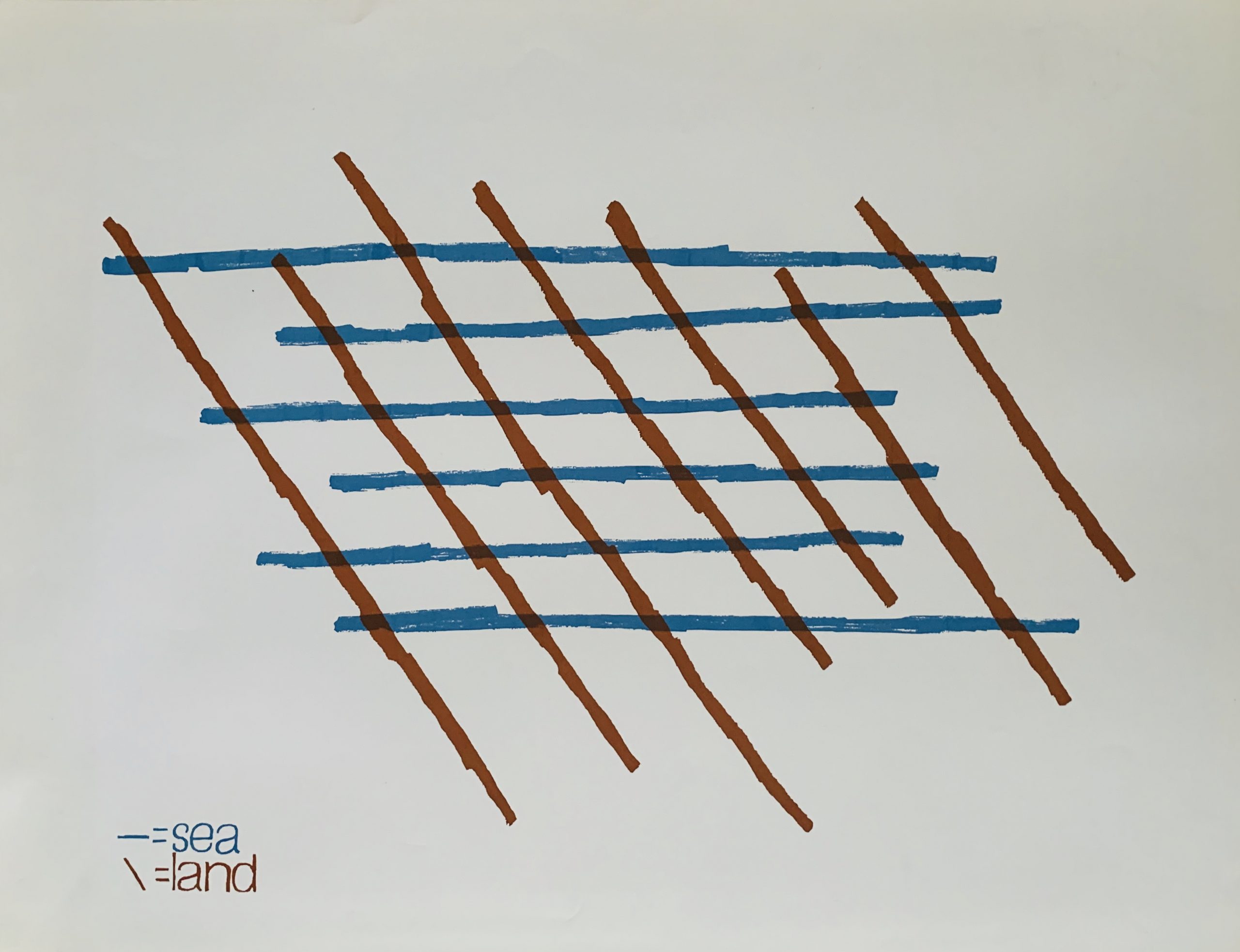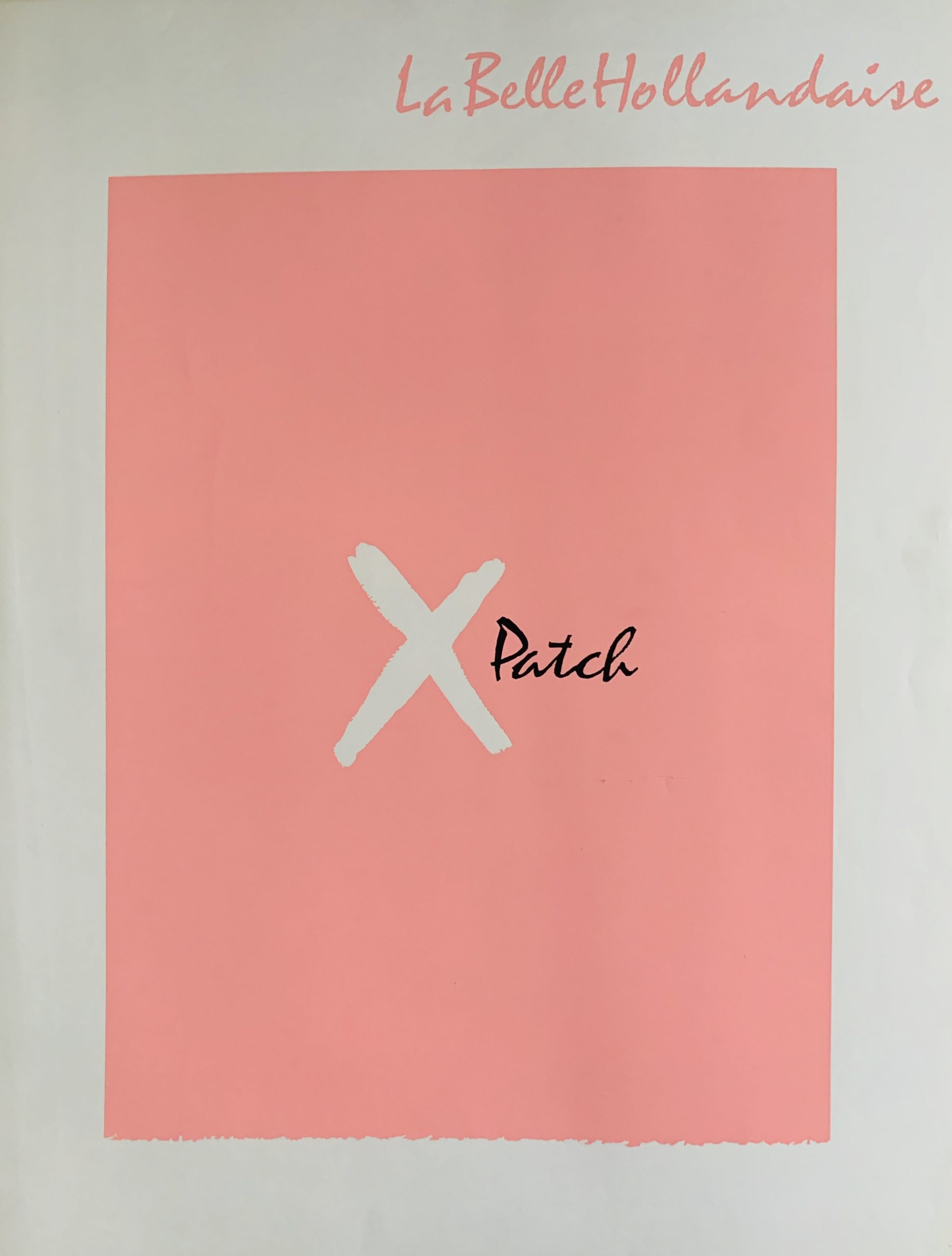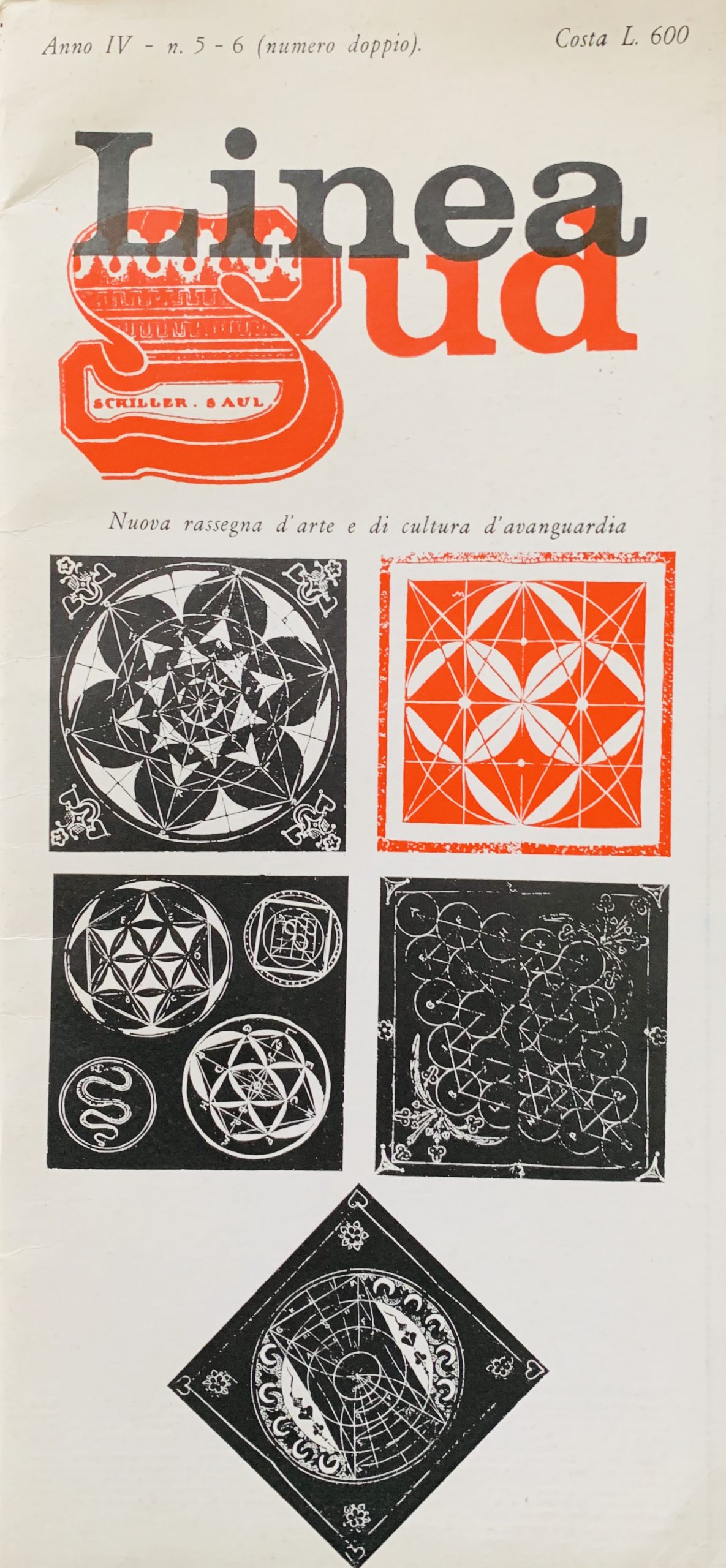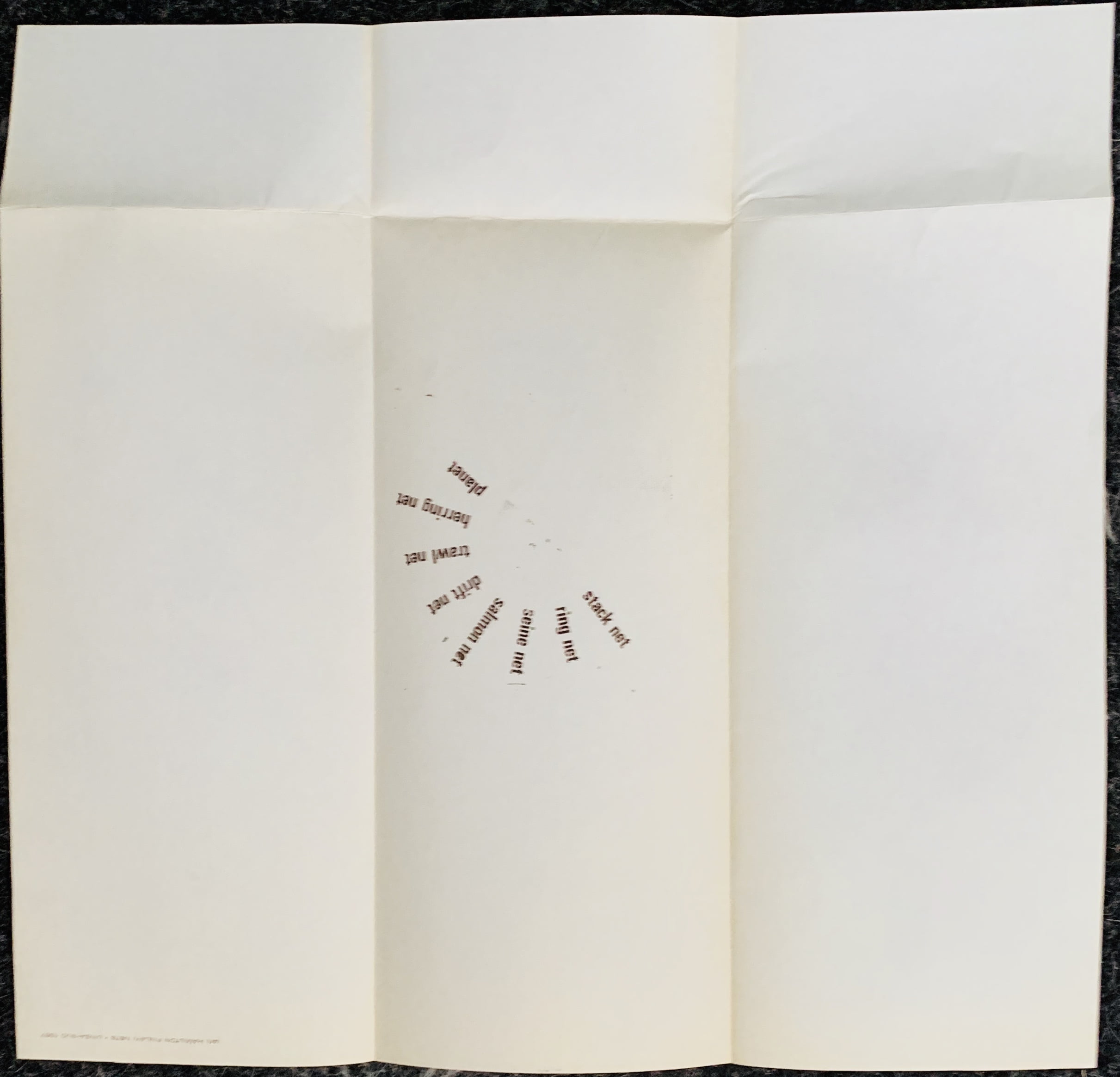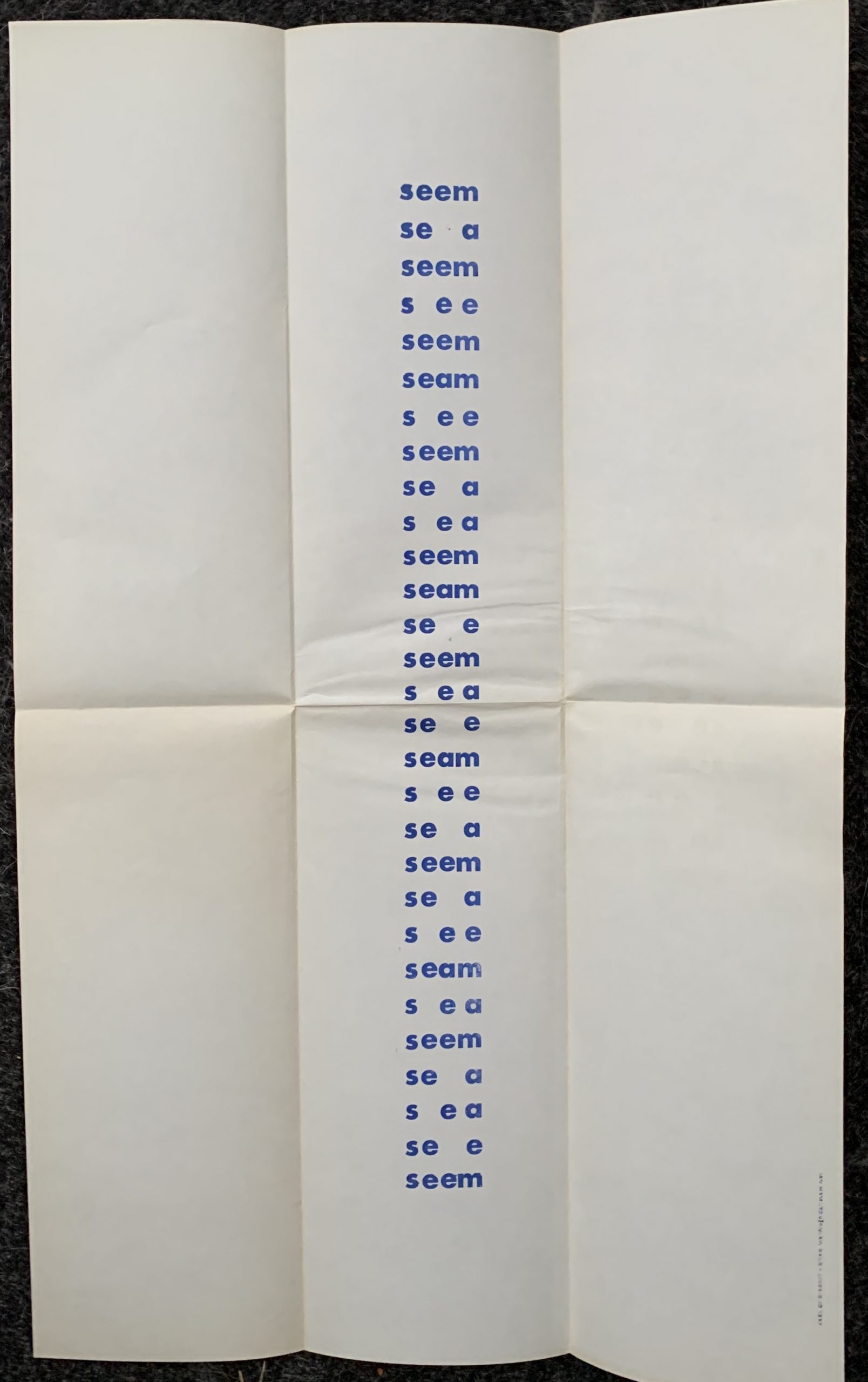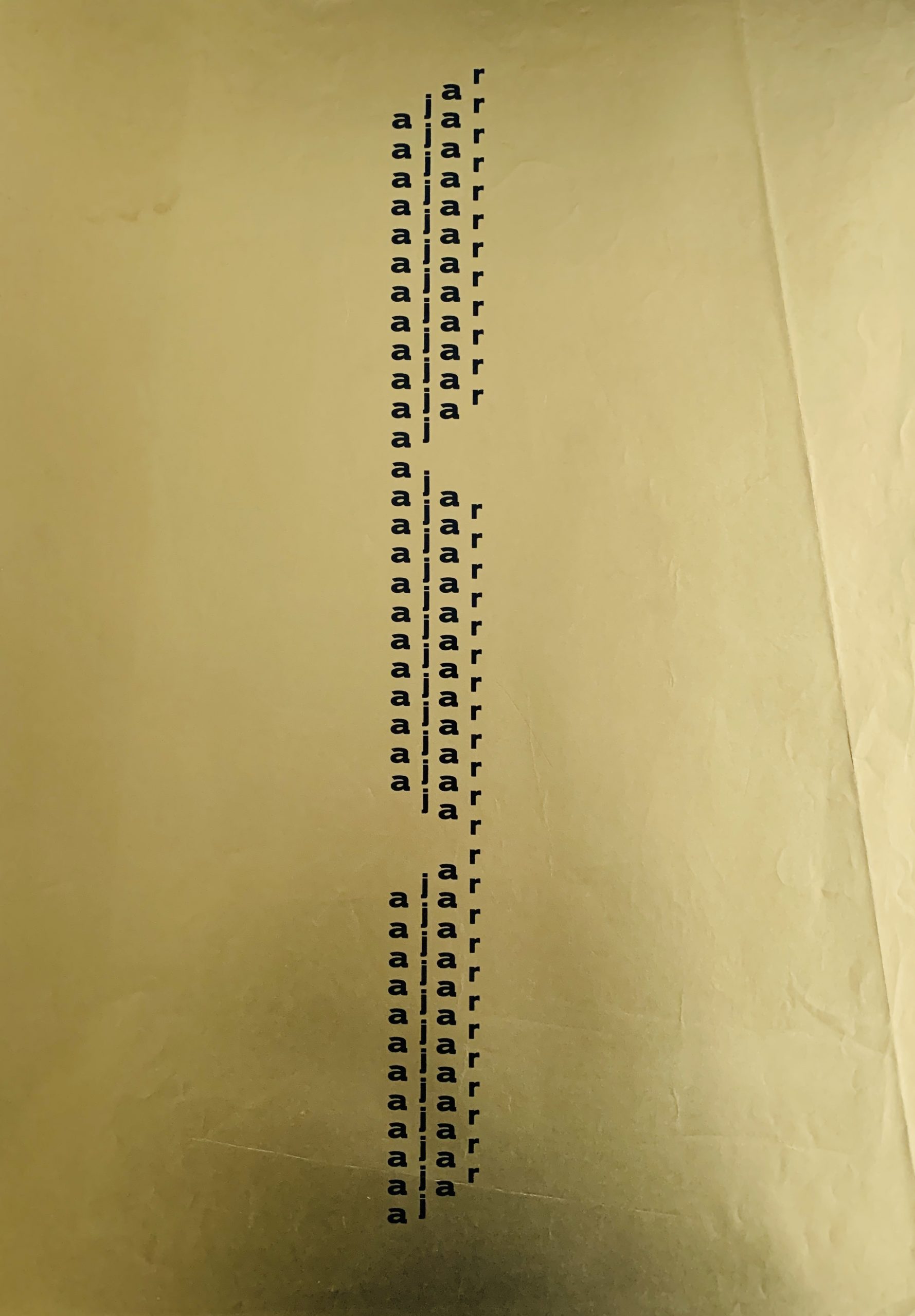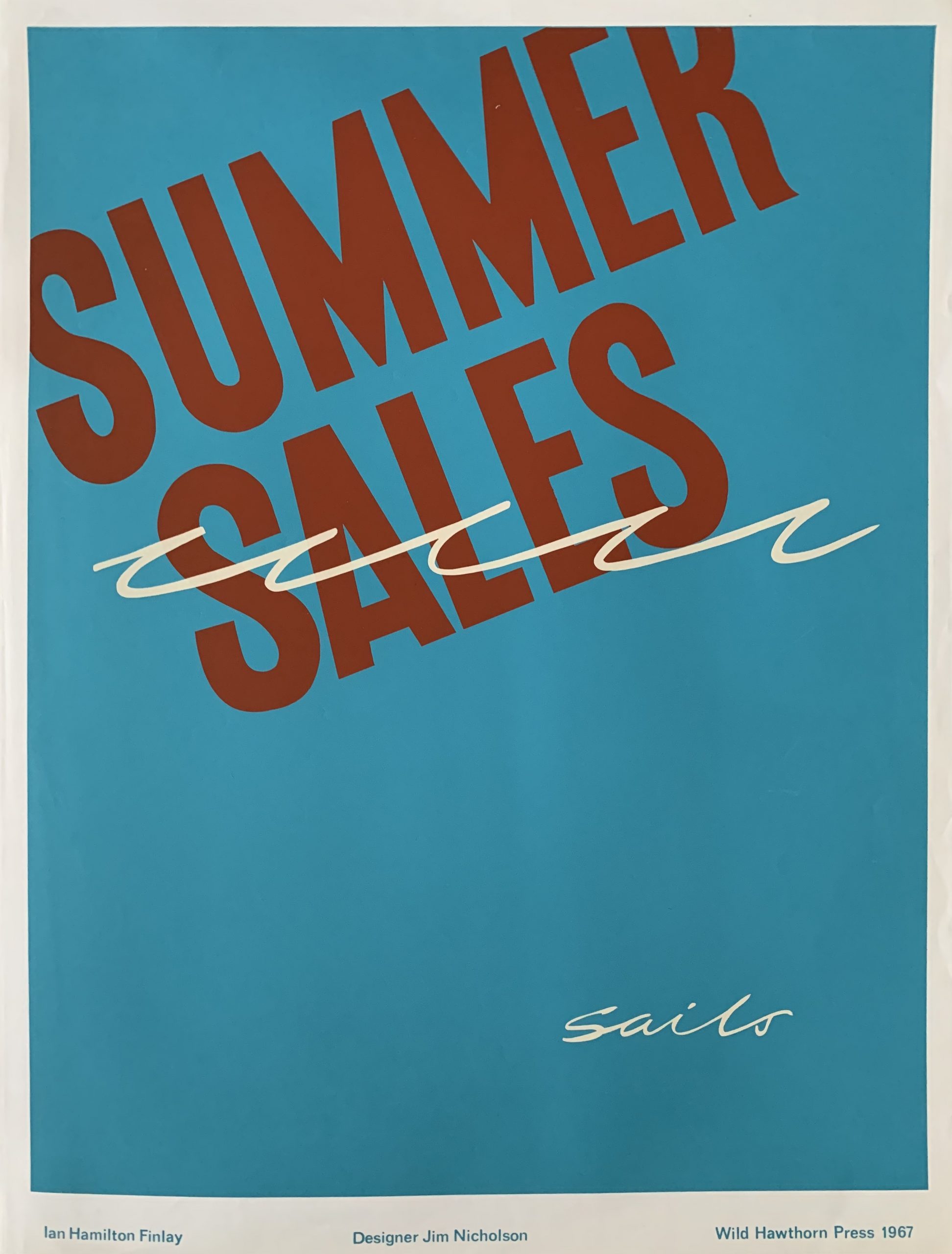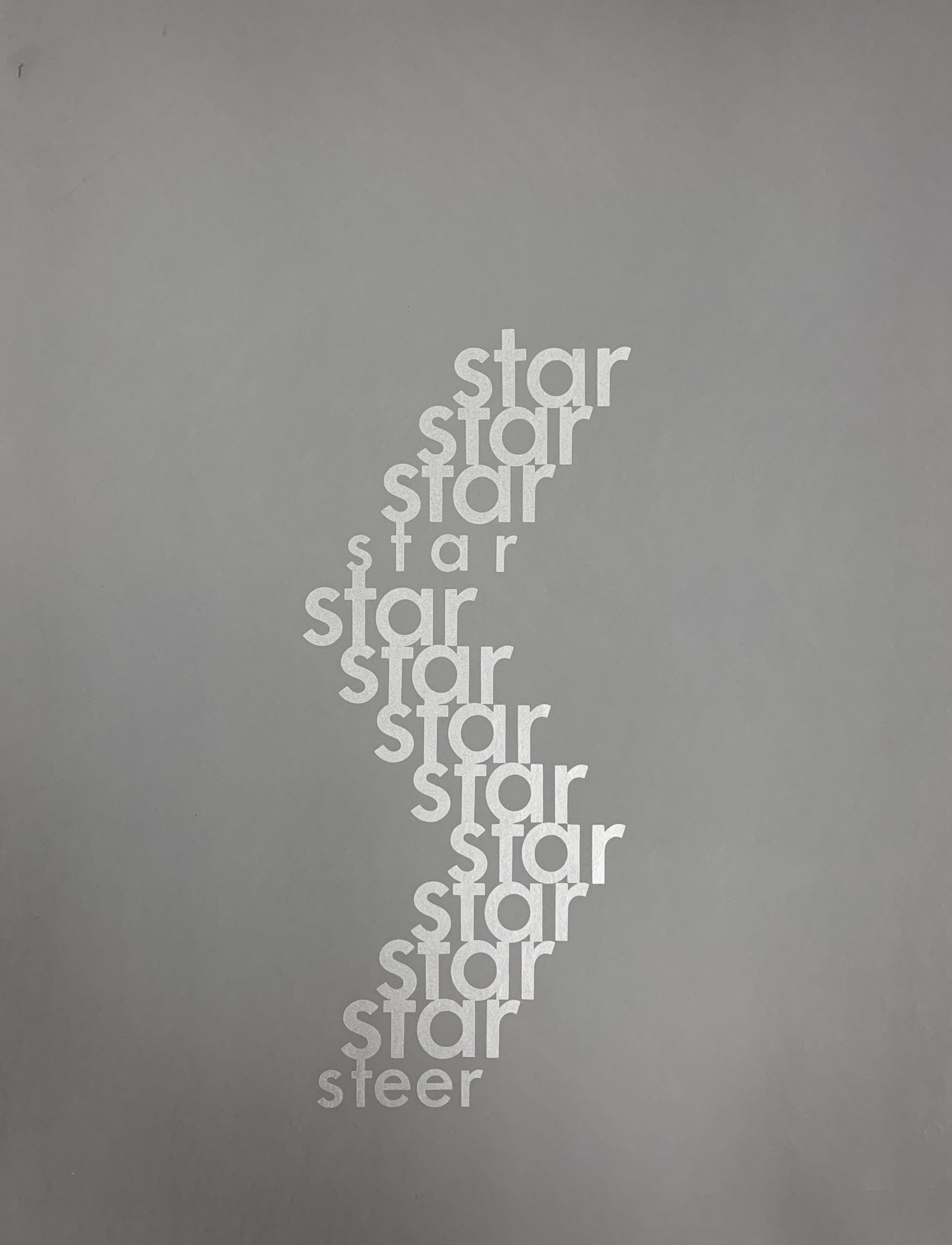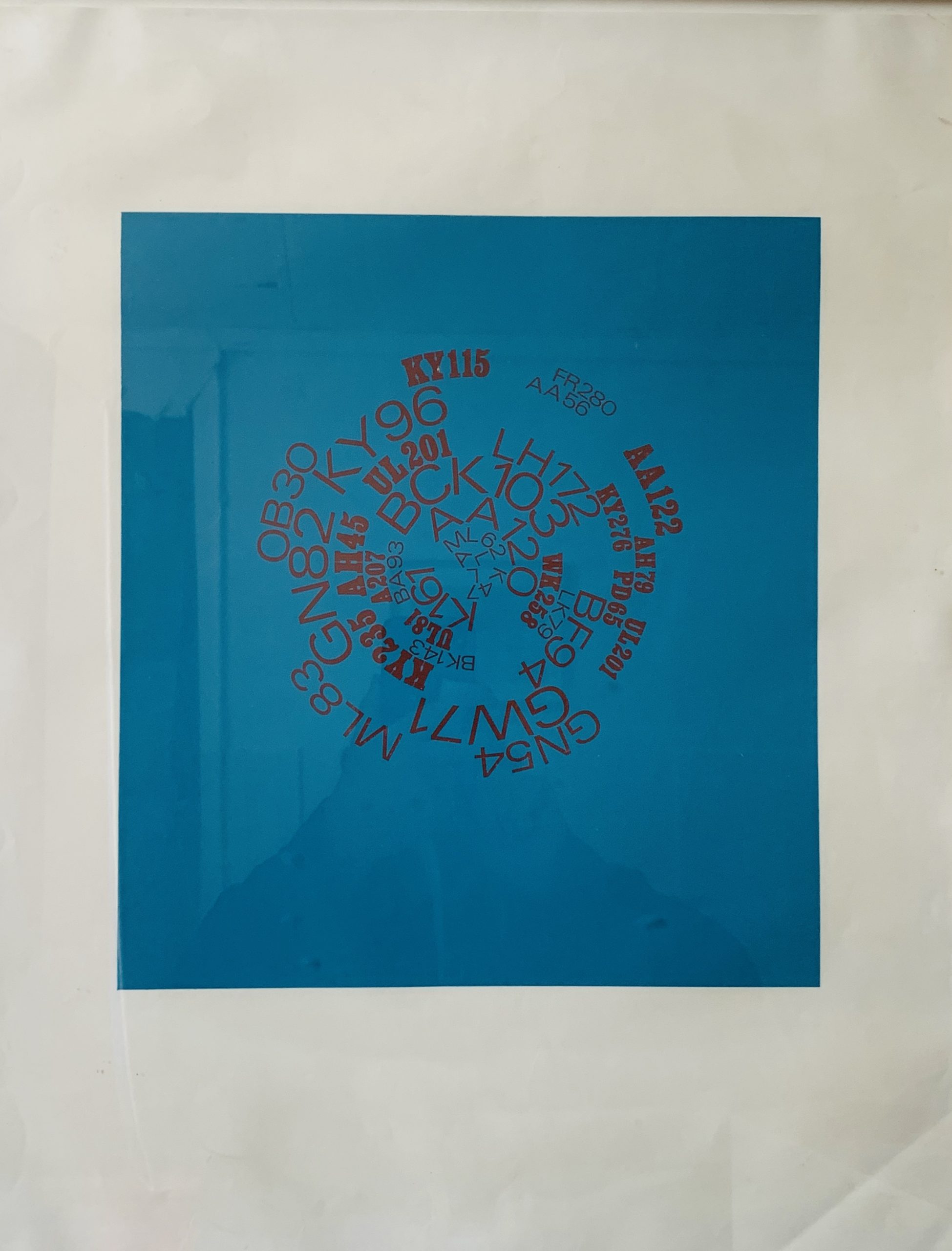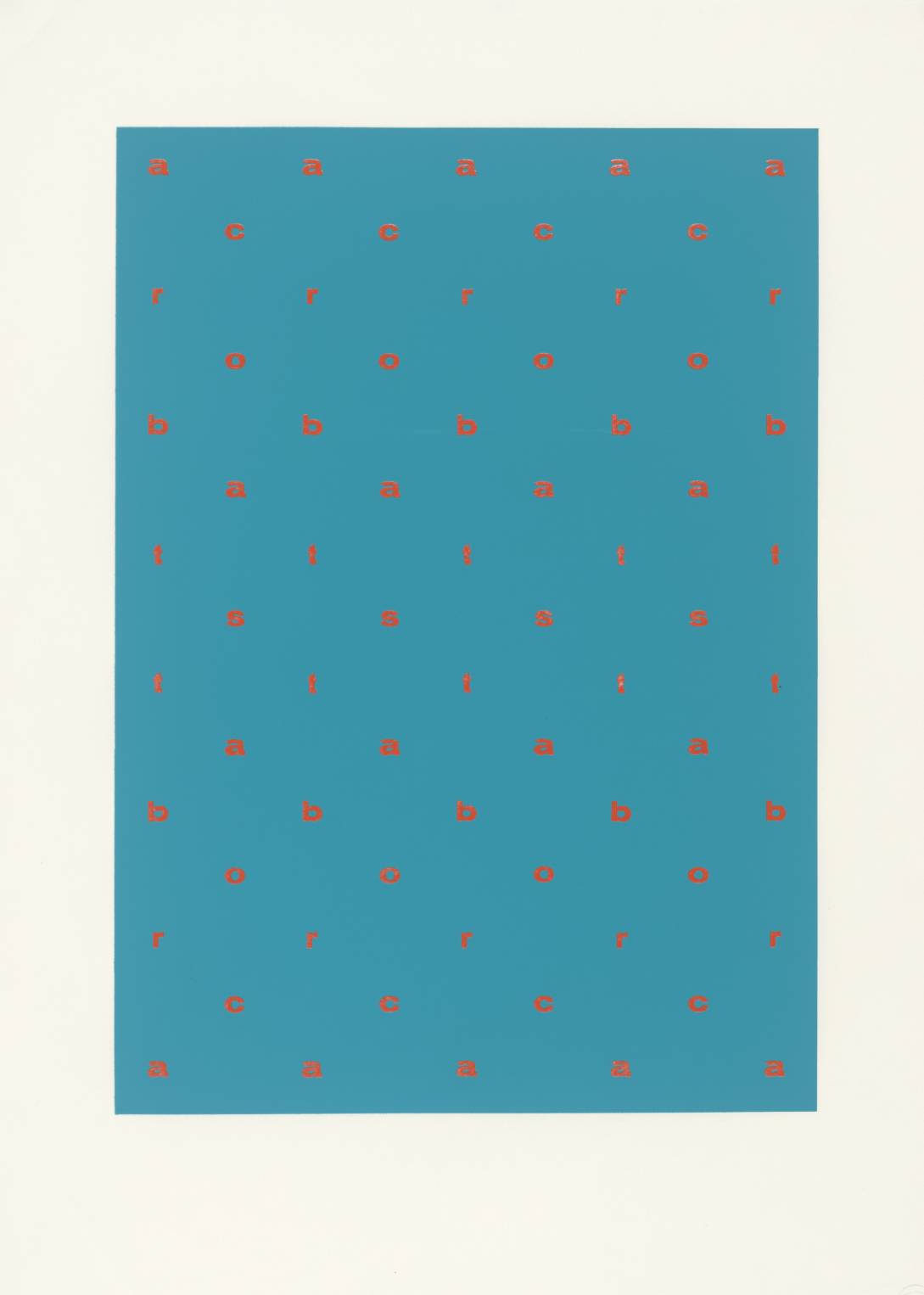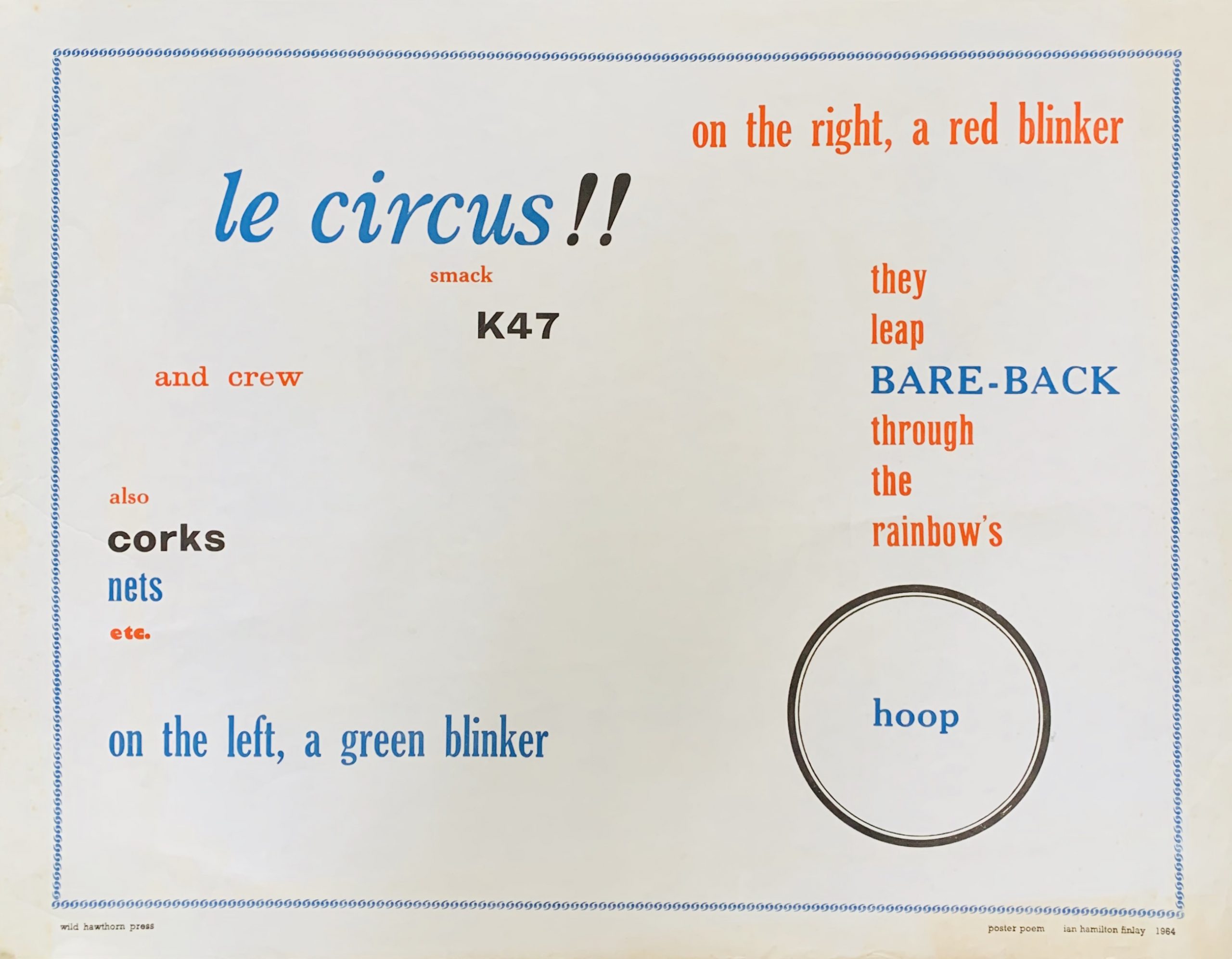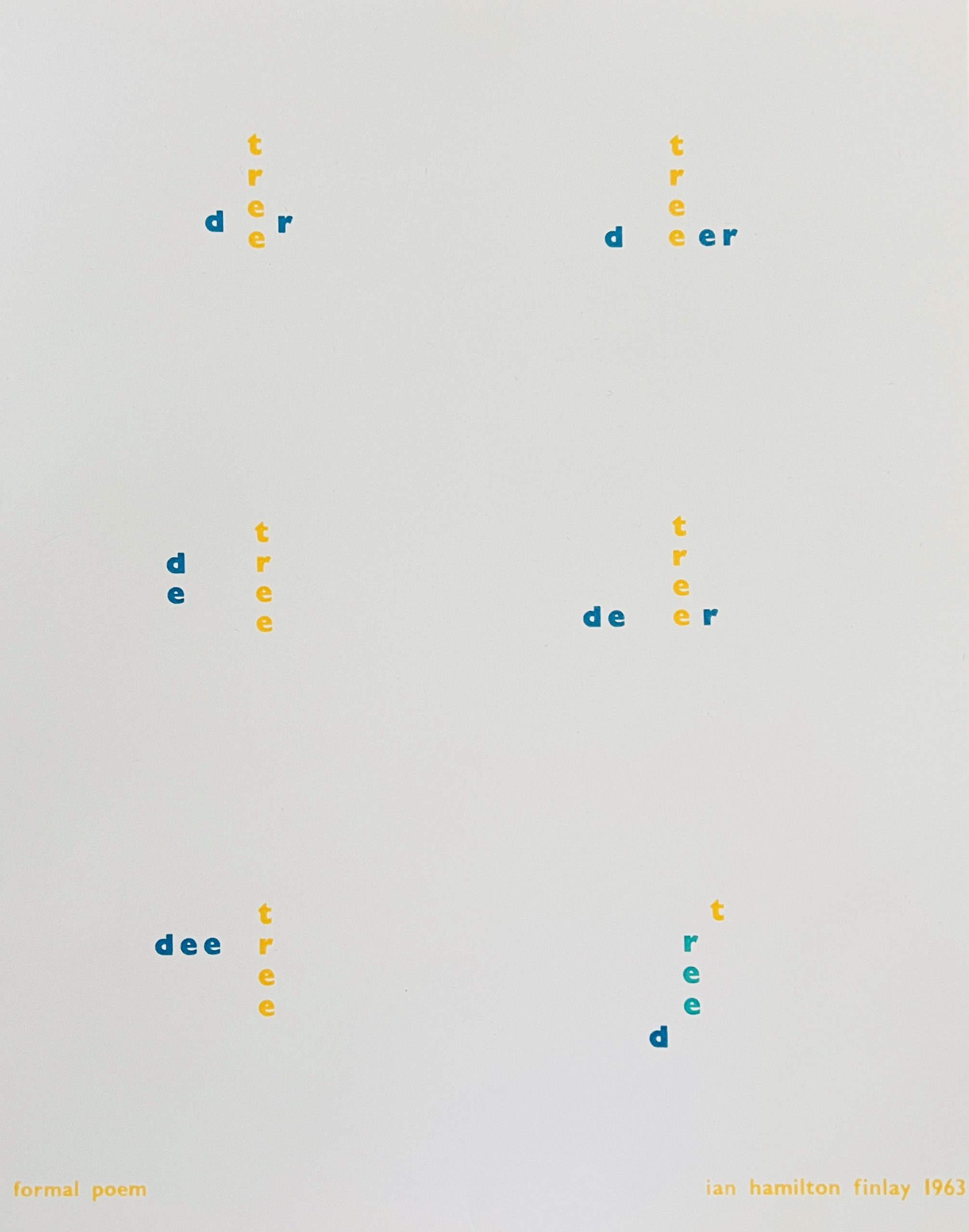24 Dec SEA POPPY 2. (FISHING BOAT NAMES). 1968.
Dunsyre: Wild Hawthorn Press, 1968
56 x 43cm, 2pp. Green on blue on white paper - a circular design made up of fishing boat names typographically set by Alistair Cant on Finlay's instruction. The pattern creates both a planet or the movement in the stars as they appear to spin around the boat as night passes. Stars for boats are essential to allow passage - until modern methods of navigation they were the sailor's only orientation. The choice of the boat names chosen by Finlay reinforces that - all have the word STAR in them e.g. Morning Star, Day Star, Fortune Star and so on.
This is the second of two large prints with a similar intent - Sea Poppy 1 being in 1966 - the other uses the letters and numbers of the boats - here the attractive names people give their vessels are used instead.
The title Sea Poppy refers to the yellow hornpoppy which only grows on sea shores - again a clear nautical reference.
This design and others like it was used by Finlay in different formats including wall works, object multiples, printed posters and cards - but this printed version uses colours that are hard to see against each other - given the text is more readable in the other formats of this work it is tempting to suggest that the colour clash here was a mistake although some psychedelic designs of the late 60s did deliberately set up such colour clashes.
...

